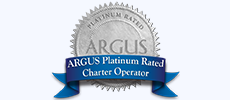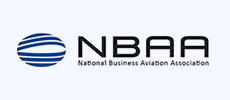In the movie, The Hunt for Red October, Jack Ryan (played by Alec Baldwin) described turbulence as,“Turbulence, solar radiation heats the earth’s crust. Warm air rises. Cool air descends. Turbulence. I don’t like that.”
Most people agree with the not liking it part of the assessment. Even well-seasoned flyers find moderate to severe turbulence unsettling.
The truth is that air turbulence can be caused by a wide range of things, including the thermals (Baldwin mentioned), jet streams, mountains, wake turbulence from other aircraft, and microbursts from storms and other craft.
From a passenger’s perspective, turbulence causes the aircraft to shake and move erratically. These movements can be from side to side or up and down. Depending on the severity of the turbulence it can be a frightening experience, but it is rarely as dangerous as it seems. In fact, USA Today states that the last major air disaster related to turbulence occurred in 1966.
The latest technology in weather forecasting and radar, as well as constant communication with other aircraft helps to warn of most turbulence events so pilots can avoid it if possible. While it isn’t always possible for pilots to see turbulence coming, pilots have been trained to deal with it when it does appear and will generally seek to change course or altitude in order to avoid the worst of it when they’ve had adequate warning.
Avoiding the Impact of Air Turbulence as a Passenger
As a passenger on an airline you have little control over the course the plane take or the altitude at which it flies. That doesn’t mean you have no control over how turbulence impacts you. These are a few things you can do in order to reduce the likelihood that you’ll experience the full force of severe turbulence.
- Plan your flights early in the day – particularly in summer months as heat can be a major contributing factor to turbulence events.
- Chose a seat closer to the wings, USA Today recommends. Sitting center mass of the craft reduces the impact of turbulence.
- Wear your seatbelt at all times when seated – even when the sign is not on. Not all turbulence can be anticipated and wearing your seatbelt will protect you from injury.
- Keep infants properly strapped into car seats or infant carriers throughout the flight, advises, Conde Nast Traveler. This is for their own safety as it is too easy to lose your grip on your child – especially if turbulence takes you by surprise.
While there is nothing you or even the most experienced of pilots can do to avoid turbulence altogether, these steps will help minimize your experience with turbulence and keep you and the people you’re traveling with safe throughout your flight.
Do Private Jets Experience Turbulence?
Unfortunately, yes, private jet charters experience turbulence just as the larger commercial airliners do. You can mitigate the impact of turbulence on your flight by booking flights in the cooler hours of the day and only working with pilots who are highly skilled and experienced. All Presidential Aviation pilots exceed FAA regulations regarding number of hours of overall flying time and hours on the specific type of jet they fly. Also, all flight crews receive ongoing safety training every six months.
Interested in experiencing the luxurious difference of flying via private charter jet? Call today to schedule your Presidential Aviation private jet charter flight.





